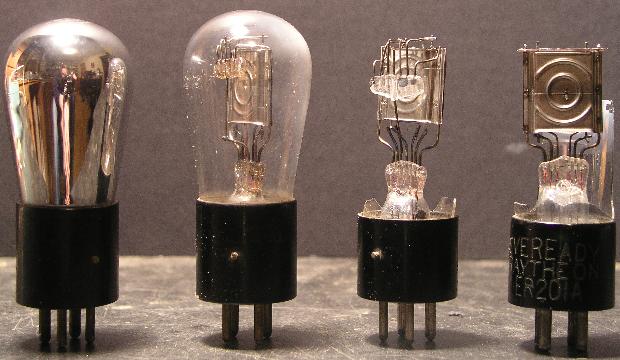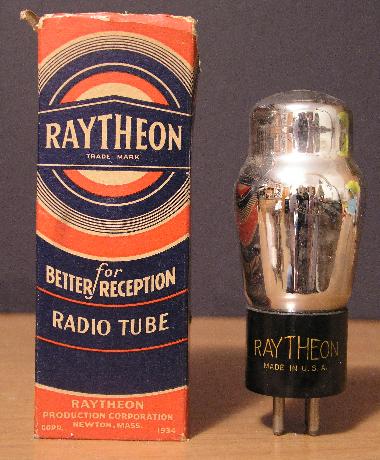
The picture above shows two types of vacuum tubes used in 1920's battery radios. The tube on the far left is an RCA Radiotron UX-201A triode tube. This tube is used as an RF amplifier, detector, and audio amplifier. The tube beside it is a Cunningham CX-300-A triode tube. This tube is used primarily as a detector. It has gas inside.
The glass envelopes on the two tubes on the right have been broken. They were broken when I received them. It was no great loss because the tubes were said to be duds anyway but the broken tubes have afforded the opportunity to see the construction of the elements inside the tubes.
The broken tube on the right center is a Cunningham CX-112-A triode tube. This tube is used primarily as the final audio output. The tube on the far right is an Eveready Raytheon ER201A triode tube.
The picture below is a closeup of the broken Cunningham CX-112-A.

The solid structure with the oval opening is the plate of the tube. Inside this structure, you can see the grid. The grid structure comprises wires wrapped around two posts, one at each end of opening. The filament is located inside the grid and can be seen as the single wire sticking out of the opening and coming to a point. The filament wire was intended to be held in place by a hook, but it became dislodged when the envelope broke.
The principal failures of these tubes are open filaments and shorts from the grid to the filament.
I have two 01A tubes in their original boxes. These tubes were manufactured by Raytheon. These tubes are the "ST-shape" with shoulders at the top of the glass envelope. (The tubes shown above are the "S-shape" and often called balloon or globe shape). One of the Raytheon tubes and its box is shown below.
 |
 |